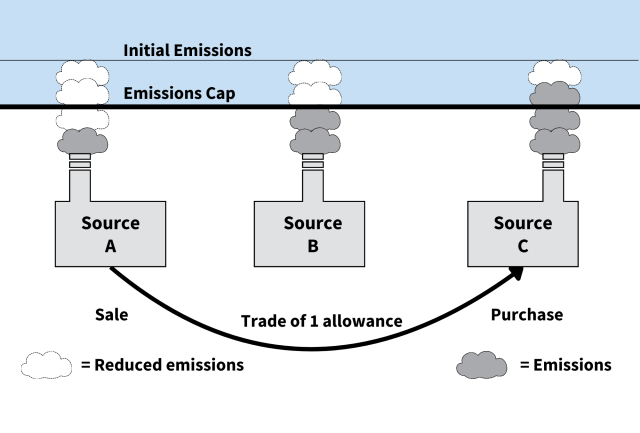What Is Emissions Trading?
Emissions trading can be an effective approach to reducing emissions to protect human health and the environment. Effectively designed emissions trading programs can protect human health and the environment, offer flexibility for individual emissions sources to tailor unique compliance paths specific to their circumstances, while providing accountability for reducing and reporting emissions.
Emissions trading programs are designed by various types of governing bodies and implemented at various geographic scales. This overview focuses on emissions trading programs developed or operated by the U.S. EPA. Most of these programs have reduced emissions earlier than and beyond the original reduction goals. Emissions trading programs are sometimes referred to as cap and trade, cap and invest, allowance trading, or market-based emissions reduction programs.

Two key components of emissions trading programs are the emissions cap on pollution and the tradable allowances. The cap establishes the maximum allowable emissions from a group of emissions sources , and it sets the emissions reduction goal. Allowances are an authorization to emit a unit of emissions (e.g., one ton) over a specific period. Because an emissions source can transfer allowances to another emissions source, the program provides flexibility for emissions sources to set their own compliance path.
Emissions trading programs are best implemented when:
- The environment and public health concerns occur over a relatively large geographic area.
- A significant number of emissions sources are responsible for the pollution.
- Emissions can be consistently and accurately measured.
Under the Acid Rain Program, the 1990 Clean Air Act Amendments (CAAA) launched a new era in environmental protection by offering provisions for an emissions trading program to reduce the impacts of acid rain. Demonstrated success led to expanded use of emissions trading to achieve additional emission reductions in support of the CAAA Good Neighbor requirements. As a result, air pollution caused by these emissions has decreased dramatically, along with its human health and environmental benefits in the last 30 years. Over time, these programs have been refined and new programs added to address various air pollutants (e.g., a five-month program to address seasonal ozone).
Next, learn about how these programs work.
